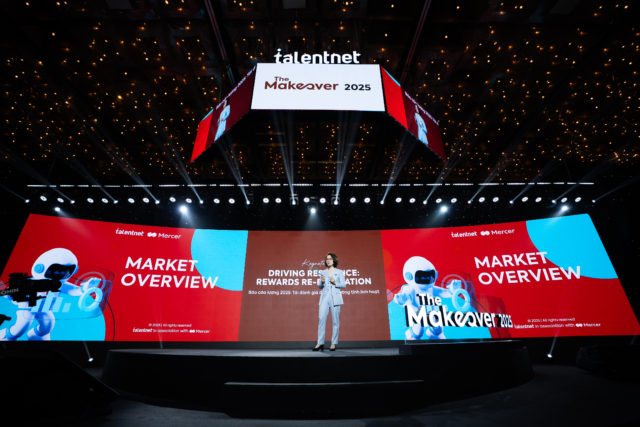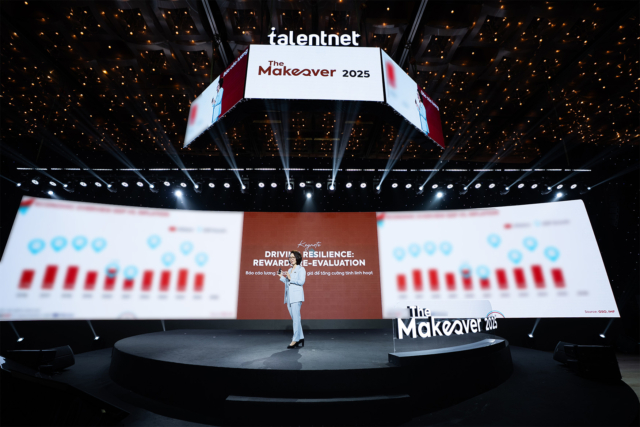Understanding Employee Engagement Through a Lean Transformation Lens

May 27, 2025
Last updated on May 28, 2025
Manufacturing leaders face a choice that will define their competitive future. They can continue managing talent the traditional way—watching skilled workers leave, struggling to find replacements, and fighting the same retention battles as everyone else. Or they can embrace lean employee engagement as more than just process improvement. Smart leaders are discovering that lean principles create the engaged, committed workforce that drives both operational excellence and talent retention. The question isn't whether lean works—it's whether you're ready to make it work for your people.

Key Takeaways
- Companies replacing skilled manufacturing workers face costs of $10,000-$40,000 per employee, making engagement-driven retention a critical financial need.
- Lean transformation succeeds when HR becomes a strategic partner, aligning hiring, evaluation, and reward systems with continuous improvement behaviors.
- Empowering employees as problem-solvers through Kaizen workshops and suggestion systems creates deeper workplace satisfaction and ownership.
- Modern workforce expectations for learning opportunities and purpose align perfectly with lean’s people-focused philosophy of continuous improvement.
The manufacturing sector stands at an inflection point where traditional talent strategies are failing spectacularly. While most CEOs focus on recruiting and retention as separate challenges, the smartest leaders recognize these as symptoms of a deeper issue: disconnected workforces that lack purpose and ownership. The solution isn’t found in higher wages or better benefits alone. Understanding why lean is important reveals the path forward: lean employee engagement transforms how people experience work, creating the committed workforce that drives both competitive advantage and bottom-line results.
What is lean transformation and why modern manufacturing needs it now
“Far too often, when people talk about ‘lean,’ the view in their head is all about cost savings and process improvement. The lean management we want is not about that. It’s about cultural change to deliver long-term improvements for our people, our customers, and our shareholders.”
– Bryan Robertson, Director of Lean Transformation at Direct Line Group –
Lean transformation goes far beyond process improvement or cost cutting. The urgency becomes clear when you look at today’s workforce challenges. This is why is lean important for modern manufacturers:
- High turnover costs: According to Deloitte, replacing a skilled manufacturing worker costs between $10,000 and $40,000
- Knowledge drain: Over half of manufacturers report serious financial impacts from turnover that destroys institutional knowledge
- Generational shift: Millennials and Gen Z workers demand learning opportunities, purpose, and real involvement in their work
- Skills gap: Modern employees seek “opportunities to learn and grow” and to “do what they do best”
This shift fits perfectly with lean’s core ideas. Where old management treats employees as task-doers, lean transformation makes them innovators and problem-solvers. They do this by improving processes, cutting waste, and boosting worker engagement through strategic HR approaches that solve workforce challenges.

Why lean transformation impacts employee engagement and ways to leverage it
Successful lean implementations don’t just change processes—they fundamentally reshape how employees experience their work and contribute to company success. When done right, lean employee engagement creates a reinforcing cycle where engaged employees drive better operational results, which in turn creates more opportunities for meaningful work.
Empowerment through problem-solving systems
Lean’s core principle of continuous improvement changes the employee experience. It transforms workers from passive task-doers into active problem-solvers. Through suggestion systems and Kaizen workshops, employees gain power to find problems and fix issues that affect their daily work. This is why an employee should learn more about lean concepts—it empowers them to become true contributors rather than just followers.
This empowerment creates what supply & demand chain executive calls “improved workplace satisfaction and a deeper sense of responsibility” among staff. The impact shows in three key areas:
- Direct ownership: When supply chain workers help redesign workflows, they develop real ownership of results
- Skill development: Production teams leading 5S workplace organization gain valuable leadership experience
- Recognition: Employee contributions become visible and valued across the organization
Most importantly, the program developed multiple in-house lean leaders, showing how empowerment spreads throughout the organization when you focus on building a strong manufacturing culture.
Aligning HR systems to reinforce lean behaviors
Traditional HR systems often work against lean transformation by rewarding individual output over team problem-solving. Employee selection, compensation, promotion, and retention practices need to support the transformation to a lean enterprise. Often we see traditional HR systems failing to promote the behaviors needed for lean.
Successful lean transformations require complete HR system changes. This means changing job criteria to value flexibility and problem-solving skills, restructuring performance reviews to include teamwork and initiative measures, and using team-based bonuses tied to quality and efficiency improvements rather than individual output alone.
The alignment extends to hiring and development practices. Companies must hire for attitude and flexibility while providing continuous learning opportunities that help employees grow their lean skills. As one industry executive noted, when team members get training to spot waste and submit Kaizen ideas, it leads to better teamwork and “recognition of creative solutions,” which directly improves workplace morale. This comprehensive approach requires expert HR consulting services to ensure all people systems work together effectively.
Skills development as engagement catalyst
Investment in employee skill development serves two purposes: building organizational ability while showing real commitment to worker growth. The business case becomes compelling when you consider that skills gaps directly impact both productivity and retention.
Nike’s Vietnam established a dedicated lean training center and worked with factory managers to educate both internal staff and suppliers in lean production methods. The comprehensive approach yielded impressive results:
- 80% of Nike’s footwear manufacturers had committed to adopting the system and begun to transform their production processes
- Higher productivity across the supply chain network
- Lower defect rates and faster lead times
- Cultural transformation toward continuous improvement and employee empowerment
This becomes even more critical in developing markets. The workforce lacks formal training, yet companies investing in “Lean Academies” or certification programs see immediate payoffs in both engagement and performance metrics.
Creating a culture of recognition and celebration
Sustaining lean transformation requires systematic recognition of improvement efforts, no matter how small. As lean experts often say, “what gets recognized gets repeated.” Smart companies build recognition into their daily operations rather than treating it as an afterthought.
Effective recognition strategies include:
- Visual celebration: Boards displaying recent successes with contributor names
- Formal programs: Quarterly continuous improvement awards and team recognition
- Simple gestures: Pizza lunches for successful Kaizen teams or showcasing employee ideas to senior leadership
- Financial alignment: Portion of incentives tied to team performance and improvement targets
Celebrate and engage approaches that clearly celebrate lean successes and the people behind them. The goal is making continuous improvement a source of personal pride that emotionally connects employees to company success.

Breaking down organizational silos
Lean transformation’s people-focused approach must extend beyond production floors to include entire supply chains. This requires engaging warehouse staff, logistics teams, and supplier workforces in improvement programs that traditionally focus only on manufacturing operations.
Practical applications include encouraging warehouse teams to reorganize picking processes using 5S methodology, involving drivers and schedulers in value-stream mapping of delivery processes, and rotating employees between departments during improvement workshops to build cross-functional understanding.
Lean teaches employees to spot inefficiencies throughout the supply chain and empowers them to fix issues, creating more collaborative and engaged cultures. This complete approach builds unity and purpose among all employees connected to manufacturing processes, not just those in direct production roles.
Making HR a strategic transformation partner
The difference between successful and failed lean transformations often comes down to one factor: HR’s role in the process. Companies that treat HR as an administrative afterthought struggle, while those positioning HR as a strategic co-owner see breakthrough results.
This strategic partnership requires HR to take on expanded responsibilities:
- Planning phase: HR representation on lean steering committees from day one
- Implementation: Co-developing transformation roadmaps with operations leaders
- Monitoring: Tracking employee sentiment and acting on early warning signs
- Integration: Ensuring people metrics get equal weight with technical KPIs
The integrated approach ensures employees feel supported rather than “done to” during transformation periods, which directly impacts both engagement levels and transformation success rates. This is where CEO and HR relationship building becomes critical for manufacturing success.
Building leadership that coaches rather than commands
Lean transformation requires basic shifts in management approach from directive leadership to coaching relationships. This involves training managers to support employee improvement efforts rather than simply directing task completion, creating psychological safety for experimentation and learning from failure.
The cultural shift proves challenging in hierarchical organizations. Many HR professionals identify cultural resistance to change as a primary barrier to strategic initiatives. Overcoming this resistance requires deliberate work on mindset shifts, including recognition programs for improvement ideas and extensive leadership development focused on coaching skills.
Successful companies invest in leadership training for manufacturing supervisors to ensure managers can effectively coach their teams through lean transformations.
The evidence clearly shows that lean employee engagement and operational transformation are mutually reinforcing forces that create sustainable competitive advantages. The path forward requires treating employees as innovators and problem-solvers rather than task executors, with HR serving as a strategic transformation partner ensuring all people systems support continuous improvement behaviors. Understanding why an employee should learn more about lean concepts becomes essential—it transforms them from passive workers into active contributors who drive both personal growth and company success.
Ready to transform your manufacturing operations through engaged employees? Contact Talentnet’s expert consultants to develop your lean transformation strategy and build the workforce capabilities that will define your competitive future. Learn more about culture change in manufacturing and discover how to build trust and engagement throughout your organization.

Solve your HR problems!
6th Floor, Star Building, 33 Mac Dinh Chi, Saigon Ward, Ho Chi Minh city, Vietnam




